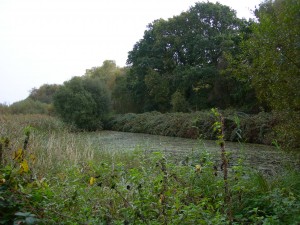During the past few weeks, I’ve been looking into invasive aquatic plants- it’s clear that there are many species and that we are doing a good job of helping them find new habitats to exploit. It’s also clear that there are big differences between species in terms of impact and the locations where they pose a real concern. It is possible to eradicate invasive species, but that’s a long-term commitment that requires a certain amount of stamina, both fiscal and physical (a study in Nevada and California estimated that manual removal of milfoil cost $750-$1500 per hectare per treatment (Eiswerth et al. 2000)- and that needs to be sustained over multiple treatments). Prevention is a better goal here, but, since these invasives are already present, we’ll need to approach them from both angles- and there are many, many ways that we can all contribute to the campaign.
Stopping the spread:
- Learn to identify the target species- federal governments, state/provincial governments, and international bodies all have lists of invasive species with descriptions, some even have ‘ask the experts’ options for help if you are stumped. Maine, for example, has a list of common names of invasives to help you recognize them in other contexts, and the US government has an invasive plant atlas.
- If you are a boater/fisherman/outdoor enthusiast, be sure to clean and dry all equipment before transporting it between bodies of water- the USFWS recommends using hot or salty water to clean equipment and reminds you that pets can transport invasive species if they play in one body of water and then are not thoroughly dried before leaving the area (that was a new idea to me). Several states have already moved to ban felt-soled waders because they are harder to clean than the rubber-soled variety- check out the Invasive Species Action Network for more information on that and other angler concerns.
- If you have a home aquarium or water garden, be sure to research your plants and talk to your suppliers- a study in South Africa found that aquaria owners were better informed than the dealers who supplied them (Martin & Coetzee 2011), so spread the knowledge you have. And please consider using native alternatives for your home and garden- in Australia, there is a region-by-region resource that gives you the best alternatives for your area. And when it comes time to dispose of a non-native species, seal them in plastic bags and put them directly in the trash- we don’t want seeds getting into compost or roots surviving the trip to the dump.
Monitoring our progress:
- A number of organizations use volunteers to track the presence of invasive species- the Invasive Plant Atlas of New England and the Invasive Plant Atlas of the Midsouth, for example, hold regular training sessions and use data from volunteers to predict areas that need special attention.
Getting to the root of an invasion:
- Many regions have organizations with active invasive species removal programs (as well as planting of native species) with activities throughout the year- this is a chance to get your hands dirty and make a personal contribution to eradicating invasive aquatics. It’s short notice, but the Chesapeake Bay Program will be planting marsh grass on May 30- they have other events throughout the year. For those of you living around Boston, the Charles River Watershed Association works to protect that water body (water chestnut removal, anyone?).
Invasive species are a very big issue, and I’ve only looked at a small piece over the past few weeks. I think that effective prevention of their spread only works when everyone is informed and participates, and I think that removal of invasives really does require everyone to pitch in because a lot of work is needed. I’ve just scratched the surface here with regard to getting involved, so find an activity that appeals to you and get to it- this is a cooperative effort.
Works cited:
Eiswerth, ME, Donaldson, SG, and WS Johnson. 2000. Potential environmental impacts and economic damages of Eurasian watermilfoil (Myriophyllum spicatum) in western Nevada and northeastern California. Weed Technology 14: 511-518.
Martin, GD and JA Coetzee. 2011. Pet stores, aquarists and the internet trade as modes of introduction and spread of invasive macrophytes in South Africa. Water SA 37: 371-380.

